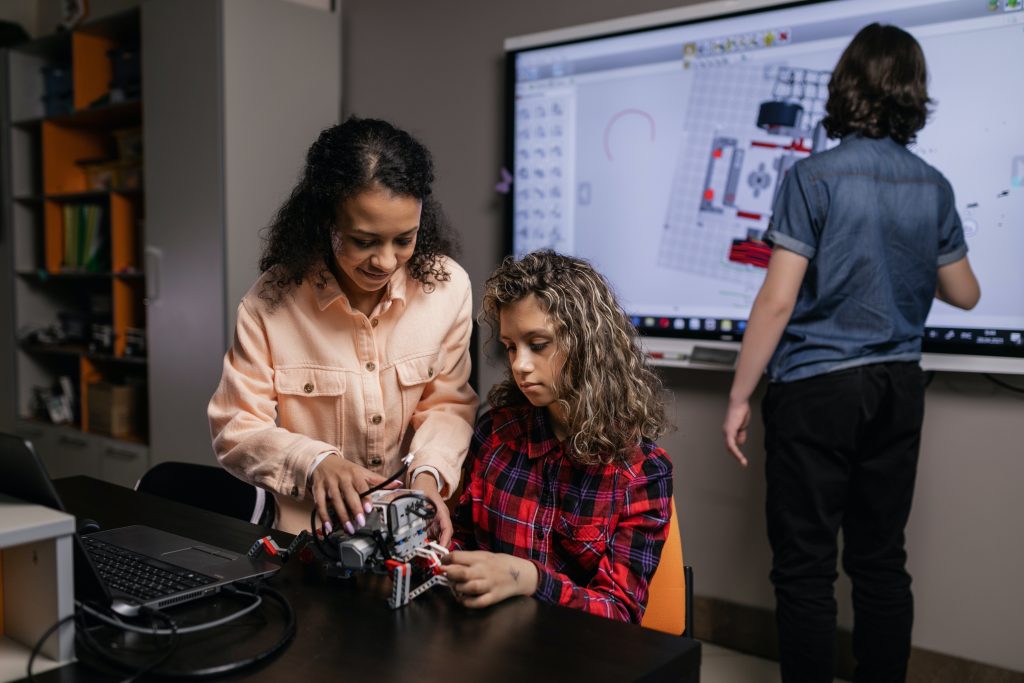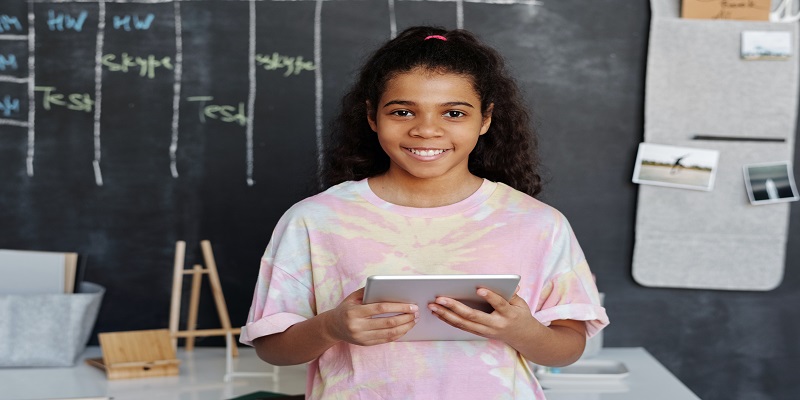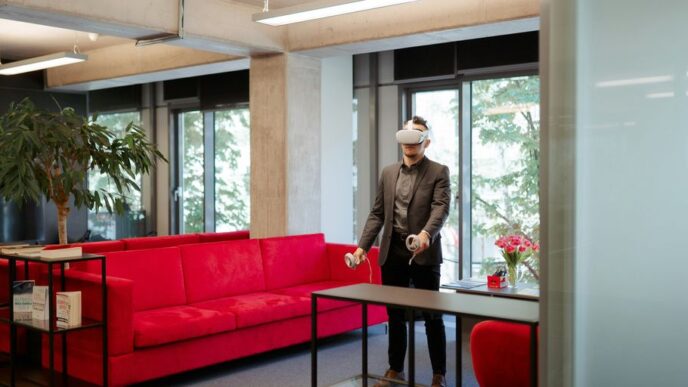Technology in the Classroom Today, many kids are lucky enough to attend classes in schools with computers and high-speed Internet access. These allow them to research and learn at their own pace, without having to wait for a teacher to arrive. Teachers and educators are beginning to recognize that it is important not just to provide a safe and welcoming learning experience, but to foster a sense of independence in children by giving them the ability to learn on their own through technology. With new software and online programs being created every day, teachers can design lessons and activities that give kids a real-life hands-on experience.
Technology in the Classroom: Video Demonstrations – Technology in the classroom helps teachers engage their students in real-life learning. Using digital screens, video walls, whiteboards, and other visual aids, teachers can show PowerPoint presentations, black-board discussions, or workbook tips and hints to aid children in learning new facts and techniques. They can also develop lesson plans and give homework assignments based on lesson topics and objectives. By allowing children to view and re-watch videos, they are more likely to retain information and fully understand complex ideas. Teachers can make use of colorful visual aids and dynamic graphics in class to enhance learning. For instance, by adding animations, a moving picture, or a 3D effect, children can learn about rain falling from the sky or chasms in the Earth.
Technology in the Classroom: Tablets – Using portable tablets for class allows teachers to take their teaching to a whole new level. Students have become more comfortable with technology, so tablets offer a perfect opportunity to teach them exactly how things work. For example, teachers can make use of touch screen technology to encourage students to point out a certain word, picture, or shape. In addition, some school districts require teachers to use tablets or interactive whiteboards. These resources help in the development of lessons and allow teachers to present complex ideas using pictures, maps, or videos. Some schools even allow the use of video walls, tablets that project video content onto the wall, or computer software that creates a virtual classroom.

Technology In The Classroom: Computer Educational Software – Teaching can be made more effective by incorporating technology into the classroom. Students are less apt to lose interest if there are several ways they can get involved in a lesson. Students are more likely to be engaged in an online lesson if they are given options on how to participate. Some schools integrate technology into the curriculum; others use instructional software that is accessed through the Internet and used in conjunction with text-based instruction. In either case, students are given several ways to gain input on their studies, participating in a hands-on environment that enhances their learning.
Technology In The Classroom: Different Types Of Technology In The Classroom Help Create Learning Objectives One of the greatest advantages of technology in the classroom is that it can be used to help create learning objectives. For instance, one of the greatest challenges facing teachers today is encouraging kids to learn. Many schools experience a decrease in student participation because students are simply not motivated enough to learn. Technology can be used to create learning objectives that guide students toward completing specific tasks, such as reading to develop language skills or learning about social studies. In today’s society, many people are busy and do not have time to dedicate solely to learning something new; therefore, they choose to just “do” the classwork. Creating learning objectives helps educators to create lessons that require students to work in multiple ways.
Technology In The Classroom: Integrating Technology With Homework Assignments Technology in the classroom can also be integrated with homework assignments to make them more effective. The process of designing homework assignments has changed dramatically over the past few decades. In the past, teachers would create lesson plans based on each child’s interests and knowledge; parents were involved in making sure their children learned everything they were supposed to learn. Now, most families have moved on from this process and rely on various forms of media to create workable homework assignments. Using technology to integrate technology into homework assignments will not only help teachers create lesson plans that are relevant to student’s lives, but it will also help parents and teachers monitor the development of their kids.












